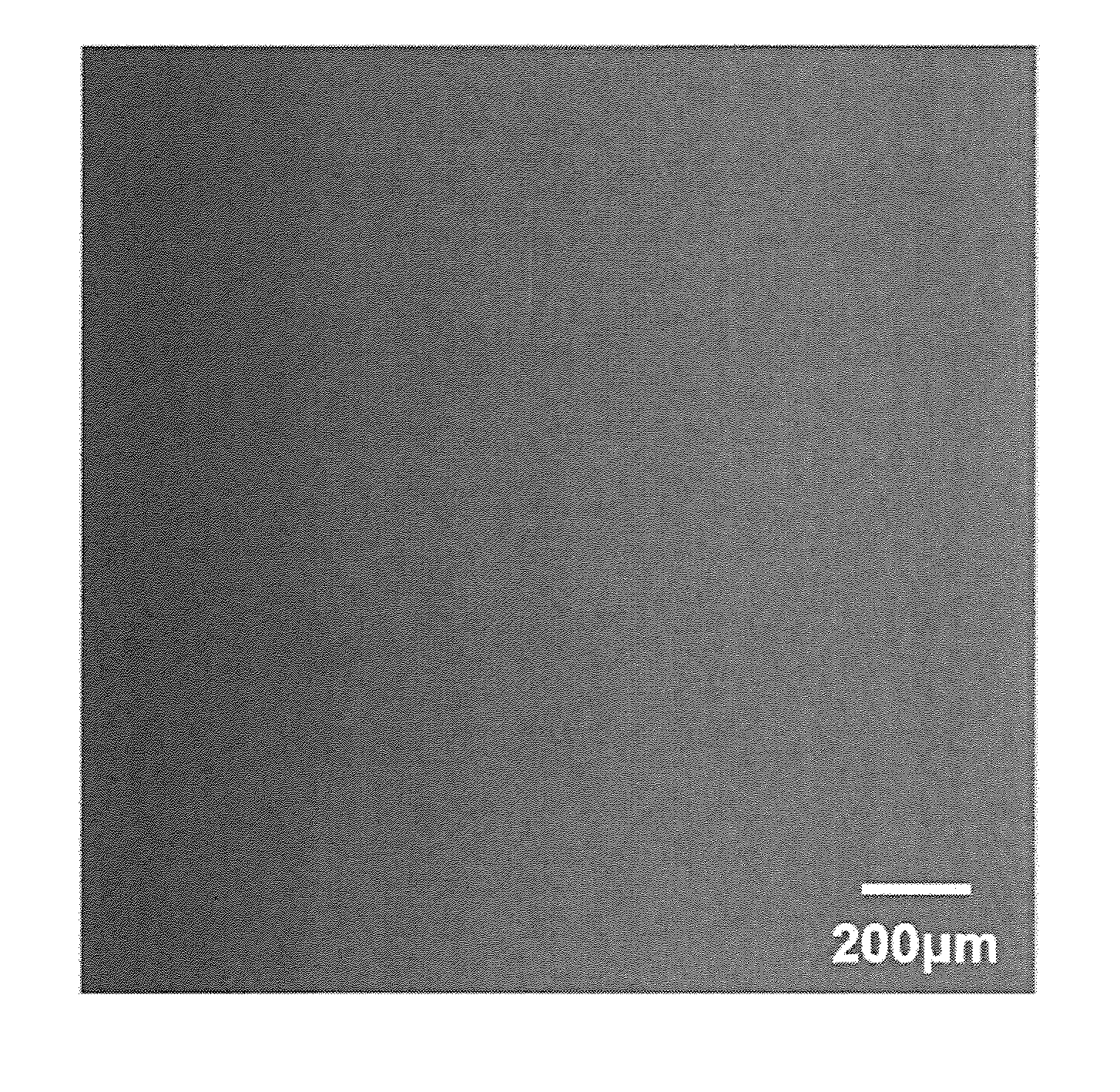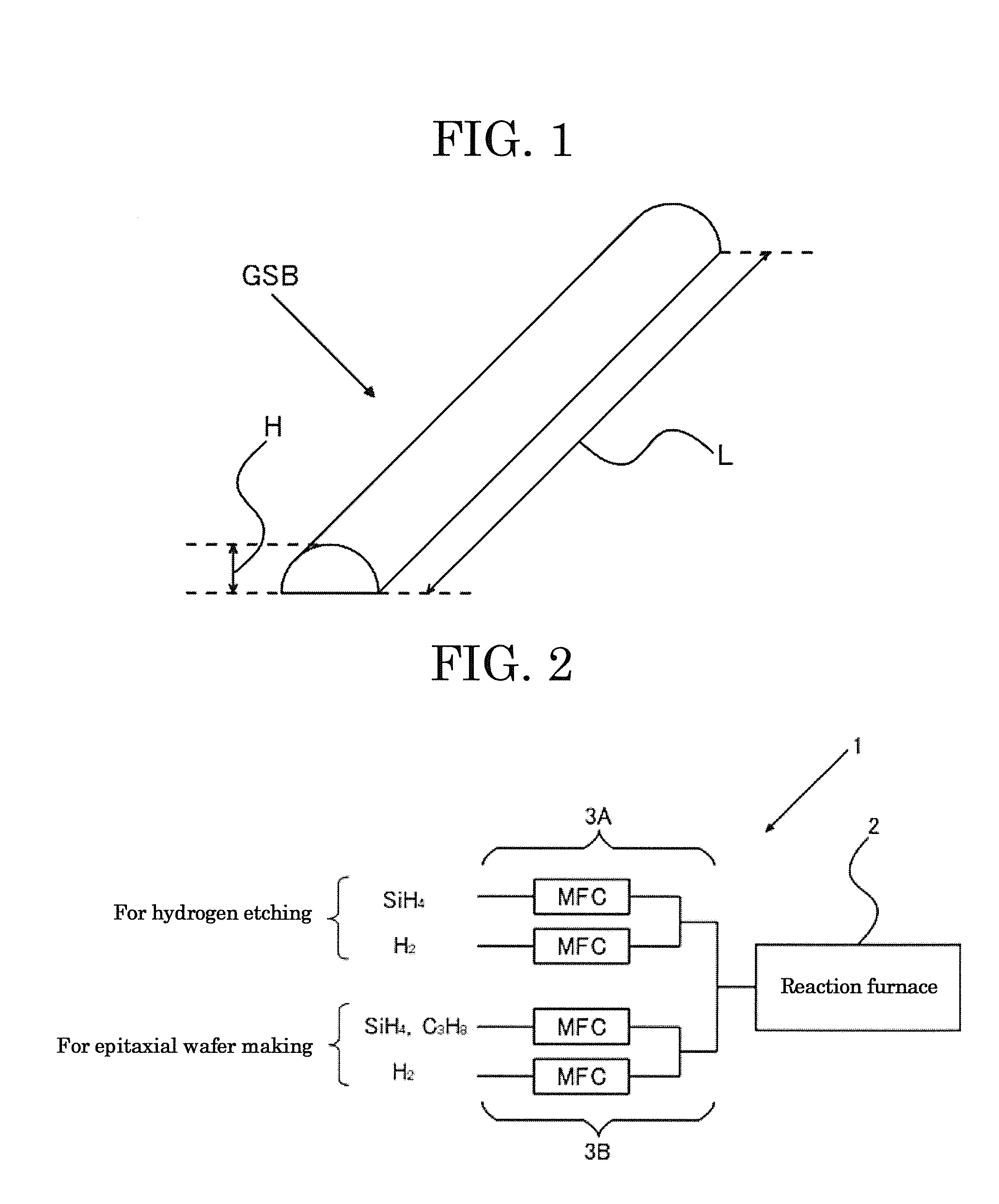Silicon Carbide Epitaxial Wafer, Method for Manufacturing Silicon Carbide Epitaxial Wafer, Device for Manufacturing Silicon Carbide Epitaxial Wafer, and Silicon Carbide Semiconductor Element
a technology of silicon carbide and epitaxial wafer, which is applied in the direction of crystal growth process, polycrystalline material growth, chemically reactive gas growth process, etc., can solve the problem that further performance improvement cannot be anticipated for silicon semiconductor devices, and achieve the effect of reducing the surface defect density and high reliability
- Summary
- Abstract
- Description
- Claims
- Application Information
AI Technical Summary
Benefits of technology
Problems solved by technology
Method used
Image
Examples
example 1
[0075]A typical silicon carbide substrate having a 4H crystal structure was provided as a silicon carbide substrate having an α-type crystal structure. This silicon carbide substrate has a substrate surface in which the (0001) Si face is tilted in the direction at 0.9°.
[0076]This silicon carbide substrate was placed in a reaction furnace 2 in a silicon carbide epitaxial wafer manufacturing apparatus 1 shown in FIG. 2, and a silicon carbide epitaxial wafer according to Example 1 was manufactured as follows. FIG. 2 is an explanatory diagram showing the schematic configuration of the silicon carbide epitaxial wafer manufacturing apparatus 1.
[0077]Here, the silicon carbide epitaxial manufacturing apparatus 1 has as a chemical vapor deposition apparatus a reaction furnace 2 having a gas discharge port allowing the adjustment of the pressure in the furnace via a discharge valve, a heating portion allowing the increase of the temperature in the furnace, an etching gas introduction port al...
example 3
[0104]A silicon carbide semiconductor device according to Example 3 having the device structure of a MOS capacitor shown in FIG. 9 was manufactured. FIG. 9 is a cross-sectional view showing the schematic configuration of the device structure of a MOS capacitor. Here, numeral 11 denotes a silicon carbide epitaxial wafer, numeral 12 denotes a silicon carbide substrate, numeral 13 denotes an epitaxially grown layer, numeral 14 denotes a silicon dioxide layer, numerals 15A and 15B denote upper electrodes, and numeral 16 denotes a lower electrode.
[0105]First, a silicon carbide epitaxial wafer in which the surface defect density of an epitaxially grown layer based on GSBs caused by BPDs was 16 / cm2 manufactured according to the manufacturing conditions in Example 1 was provided as the silicon carbide epitaxial wafer 11.
[0106]The surface of the epitaxially grown layer 13 of this silicon carbide epitaxial wafer 11 was oxidized in a 1,200° C.·O2 atmosphere by thermal oxidation to form the sil...
PUM
| Property | Measurement | Unit |
|---|---|---|
| Angle | aaaaa | aaaaa |
| Angle | aaaaa | aaaaa |
| Nanoscale particle size | aaaaa | aaaaa |
Abstract
Description
Claims
Application Information
 Login to View More
Login to View More - R&D
- Intellectual Property
- Life Sciences
- Materials
- Tech Scout
- Unparalleled Data Quality
- Higher Quality Content
- 60% Fewer Hallucinations
Browse by: Latest US Patents, China's latest patents, Technical Efficacy Thesaurus, Application Domain, Technology Topic, Popular Technical Reports.
© 2025 PatSnap. All rights reserved.Legal|Privacy policy|Modern Slavery Act Transparency Statement|Sitemap|About US| Contact US: help@patsnap.com



